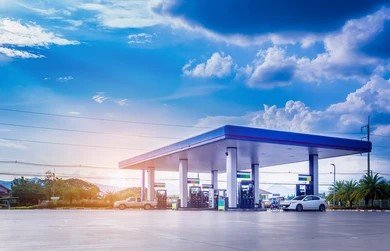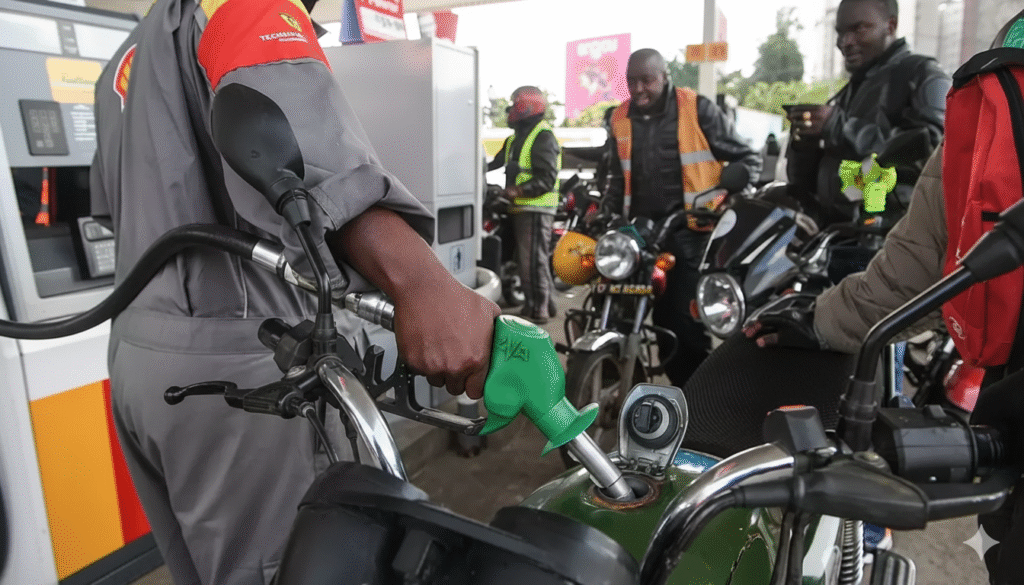Introduction
Fuel prices in Kenya vary widely depending on location, transportation logistics, and supply chain challenges. The Energy and Petroleum Regulatory Authority (EPRA) regularly publishes maximum pump prices for super petrol, diesel, and kerosene across towns. Understanding which towns pay more and which towns enjoy relatively lower fuel costs can help consumers, businesses, and policymakers make better decisions and plan budgets accordingly.
In this post, you’ll find a detailed look at 10 Kenyan towns with the highest fuel prices and 10 towns with the lowest, based on the latest EPRA data for the period September 15 to October 14, 2025. We’ll also explore why these disparities exist and what factors push prices up or down.EPRA’s recent review showed slight decreases in fuel prices in many areas, attributed to lower landed costs of imported petroleum. For Nairobi, the retail prices are KSh 184.52 for super petrol, KSh 171.47 for diesel, and KSh 154.78 for kerosene per litre during this review period.
But not all towns are paying the same. Distance from depots, road conditions, elevation, storage costs, and other logistic challenges affect the final price consumers must pay.
10 Towns with the Highest Fuel Prices in Kenya
Here are 10 towns where fuel is most expensive according to EPRA’s latest pump price ceilings:
| Rank | Town | Super Petrol (KSh / litre) | Diesel (KSh / litre) | Kerosene (KSh / litre) |
|---|---|---|---|---|
| 1 | Mandera | 206.70 | 193.65 | 176.96 |
| 2 | Elwak | 202.68 | 189.63 | 172.93 |
| 3 | Moyale | 200.46 | 187.41 | 170.72 |
| 4 | Wajir | 200.17 | 187.12 | 170.43 |
| 5 | Tarbaj | 199.90 | 186.85 | 170.16 |
| 6 | North Horr | 199.39 | 186.34 | 169.64 |
| 7 | Sololo | 198.83 | 185.77 | 169.08 |
| 8 | Loyangalani | 198.05 | 185.00 | 168.30 |
| 9 | Kalacha | 197.93 | 184.88 | 168.19 |
| 10 | Marsabit | 197.73 | 184.68 | 167.99 |
10 Towns with the Lowest Fuel Prices in Kenya
Here are 10 towns where fuel costs are relatively lower under the same EPRA review:
| Rank | Town | Super Petrol (KSh / litre) | Diesel (KSh / litre) | Kerosene (KSh / litre) |
|---|---|---|---|---|
| 1 | Kaloleni | 181.15 | 168.10 | 151.40 |
| 2 | Mombasa | 181.24 | 168.19 | 151.49 |
| 3 | Samburu | 181.39 | 168.34 | 151.66 |
| 4 | Taru | 181.70 | 168.65 | 151.97 |
| 5 | Malindi | 182.47 | 169.42 | 152.72 |
| 6 | Mogotio | 183.11 | 170.41 | 153.76 |
| 7 | Gilgil | 183.13 | 170.43 | 153.78 |
| 8 | Molo | 183.26 | 170.57 | 153.92 |
| 9 | Nakuru | 183.56 | 170.87 | 154.21 |
| 10 | Nyahururu | 183.62 | 170.93 | 154.28 |
Comparing High vs Low Price Towns
From the tables above, we observe:
- The gap between the highest and lowest towns for super petrol is roughly KSh 25 to 26 per litre.
- Diesel shows a large variance, with remote towns facing much higher prices.
- Kerosene, often used for cooking and lighting in less urbanised areas, also shows similar disparities.

Why These Differences Exist
Understanding the root causes of such disparities is key for both consumers and policymakers. Here are some of the main factors:
- Distance and Logistics Costs
Towns far from fuel depots or the coast pay more due to higher transportation and handling costs. Fuel must be transported by road over poor networks, which increases wear, delays, and risk. Remote towns like Mandera and North Horr are prime examples. - Infrastructure and Storage Facilities
Areas with limited storage depots or poor access roads have to depend on smaller, irregular deliveries at higher cost. This affects cost per litre significantly in northern and northeastern Kenya. - Supply Frequency
When deliveries are infrequent, sellers may charge higher margins to cover the higher risk and cost of maintaining stock. - Taxes, Levies, and Duties
While EPRA sets maximum pump prices inclusive of taxes and levies, regional cost differences in handling those taxes still feed into the final cost. - Market Competition
In many coastal towns and more urbanized areas, competition among fuel stations keeps prices more stable and often lower, compared to remote areas where there might be few suppliers with the power to set higher prices. - Currency Fluctuations and Global Fuel Costs
The cost of importing petroleum, foreign exchange rates, and international shipping costs affect all towns but impact remote areas more since they rely entirely on imports plus long transport routes.
Impact on Consumers and Businesses
These differences are more than just numbers. They translate to real financial pressures:
- Households in high price towns spend noticeably more on transport or on fuel for generators, lighting, and cooking.
- Small businesses in remote areas face thinner margins because fuel is a major input cost.
- Agricultural operations, which often rely on diesel for irrigation pumps, tractors, and transport, are particularly sensitive to diesel price hikes.
- Transport and logistics costs ripple through supply chains, raising the cost of goods in high price towns.
The Role of HFO and IDO in Kenya’s Fuel Market
Beyond petrol and diesel prices, it is also important to understand the role of Heavy Fuel Oil (HFO) and Industrial Diesel Oil (IDO) in Kenya’s energy market. These fuels are vital for industries such as manufacturing, transport, construction, and agriculture. IDO, also called furnace oil, is widely used in boilers, generators, and heavy machinery, while HFO powers large-scale industrial processes and shipping. Their pricing often moves in tandem with global oil trends, directly influencing industrial production costs in Kenya. By monitoring EPRA’s reports, businesses can plan ahead and secure reliable supply at competitive rates.
What EPRA and Government Can Do
To help reduce unfair price burdens, here are policies and actions that might help:
- Investment in fuel depots and storage facilities in remote and Northern Kenya to reduce transport distance and handling costs.
- Improving road infrastructure to ensure better and more reliable transportation of fuel to remote areas.
- Adjusting or subsidizing transport levies in hardship areas to reduce mark-ups driven by high logistics costs.
- Enhancing competition by facilitating entry of more fuel suppliers in high-cost regions.
- Transparent and frequent reviews to ensure that any drops in international fuel costs get passed down to consumers quickly.
Tips for Consumers in High Price Towns
If you live in a town with higher fuel prices, here are some practical strategies:
- Plan ahead and fill up when travelling through lower-priced towns if possible.
- Carpool or share transport to reduce individual fuel consumption.
- Monitor price bulletins from EPRA to take advantage of price drops.
- Use more efficient or alternative energy sources where possible, such as solar lighting or improved cookstoves.
- Support local advocacy for better infrastructure and fuel storage facilities.
Conclusion
The EPRA data clearly shows stark contrasts in fuel prices across Kenyan towns. While towns like Mandera, Elwak, Moyale, Wajir, and North Horr suffer high fuel pump prices, many coastal and central towns enjoy more affordable rates. Understanding these disparities is critical for planning for individuals, businesses, and policymakers alike.
By spotlighting the 10 highest and 10 lowest fuel price towns, we see how geography, supply chain challenges, infrastructure, and regulatory frameworks all play into what we pay at the pump. In addition, industries must also track the costs of HFO and IDO, which are central to Kenya’s industrial and transport sectors. With increased awareness and targeted action, these gaps can be narrowed, bringing fairer fuel pricing to all parts of Kenya.

